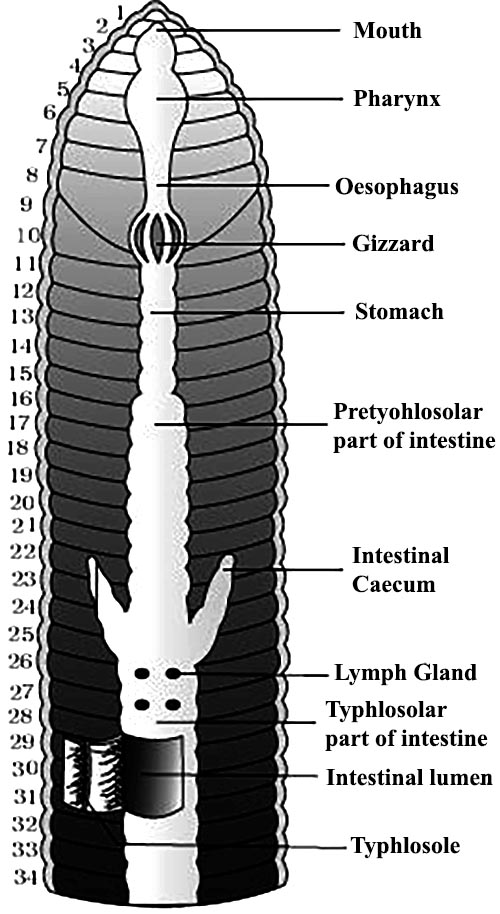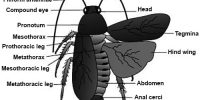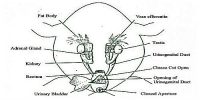The body wall of the earthworm is covered externally by a thin non-cellular cuticle below which is the epidermis, two muscle layers (circular and longitudinal) and an innermost coelomic epithelium. The epidermis is made up of a single layer of columnar epithelial cells which contain secretory gland cells. The alimentary canal is a straight tube and runs from first to the last segment of the body. (Figure)

A terminal mouth opens into the buccal cavity (1-3 segments) which leads into the muscular pharynx. A small narrow tube, oesophagus (5-7 segments), continues into a muscular gizzard (8-9 segments). It helps in grinding the soil particles and decaying leaves, etc. The stomach extends from 9-14 segments. The food of the earthworm is decaying leaves and organic matter mixed with soil. Calciferous glands, present in the stomach, neutralize the humic acid present in humus. Intestine starts from the 15th segment onwards and continues till the last segment. A pair of short and conical intestinal caecae project from the intestine on the 26th segment. The characteristic feature of the intestine between 26-35 segments in the presence of the internal median fold of dorsal wall called typhlosole.
This increases the effective area of absorption in the intestine. The alimentary canal opens to the exterior with a small rounded aperture called anus. The ingested organic-rich soil passes through the digestive tract where digestive enzymes break down complex food into smaller absorbable units. These simpler molecules are absorbed through intestinal membranes and are utilized.














